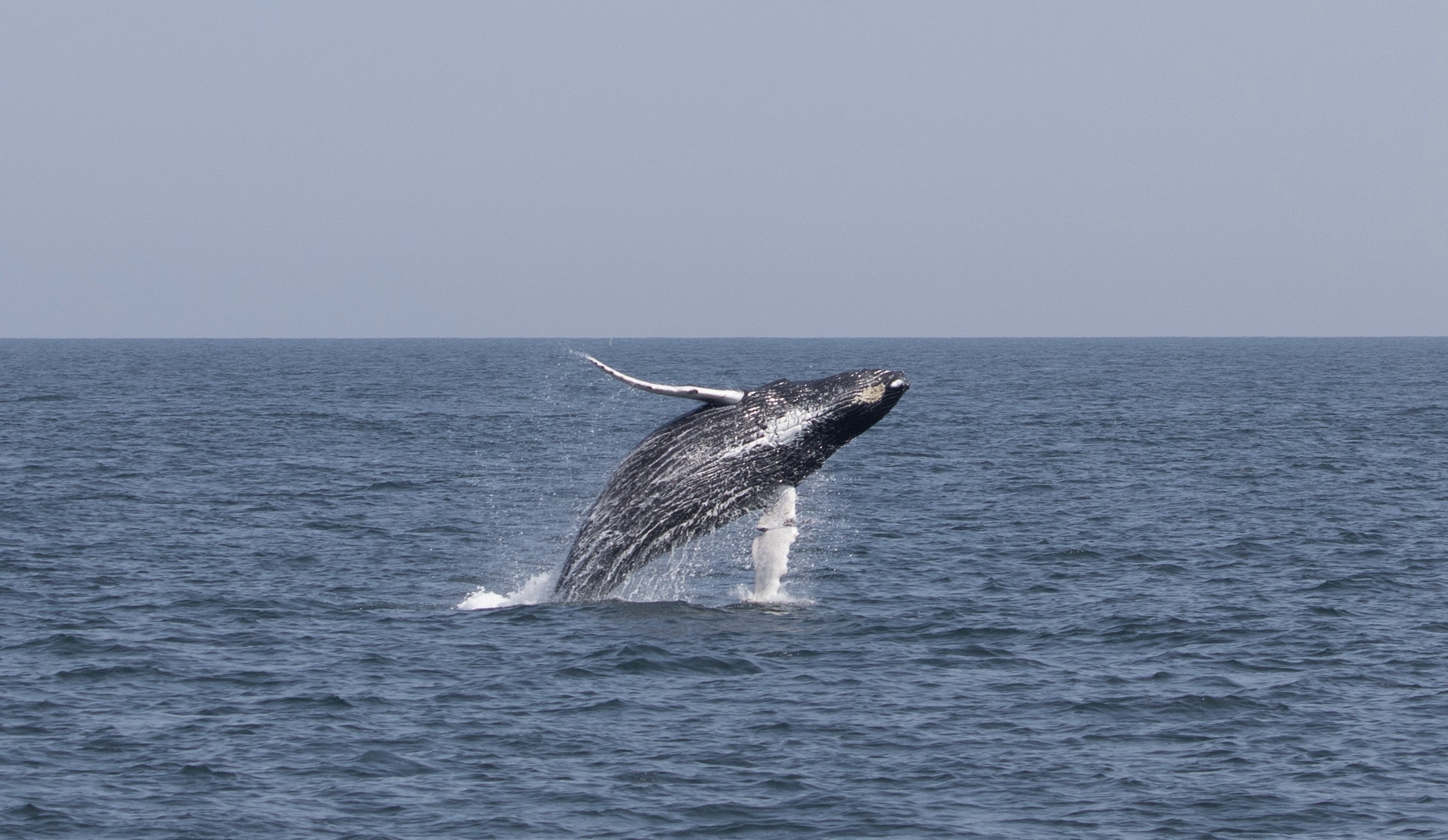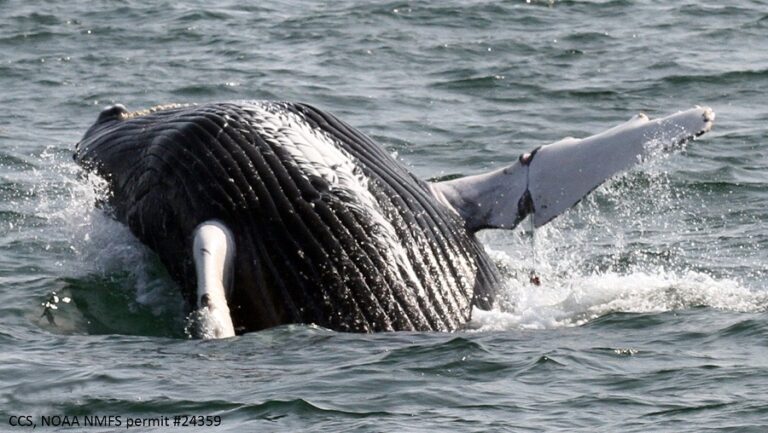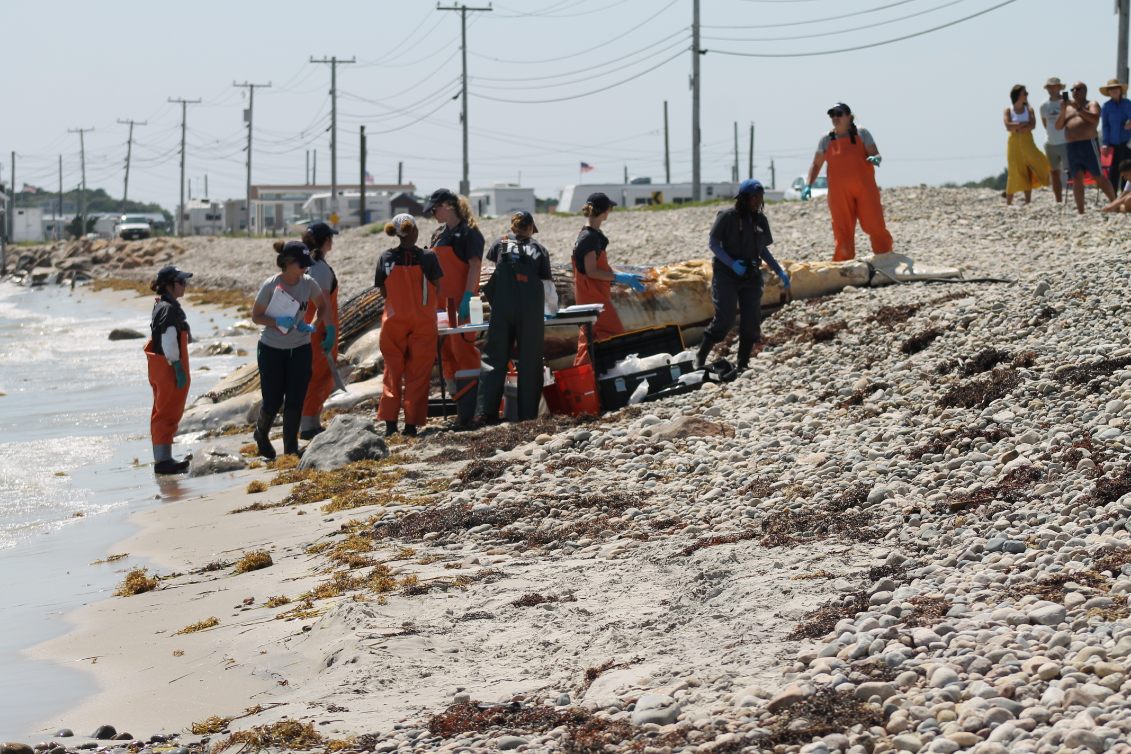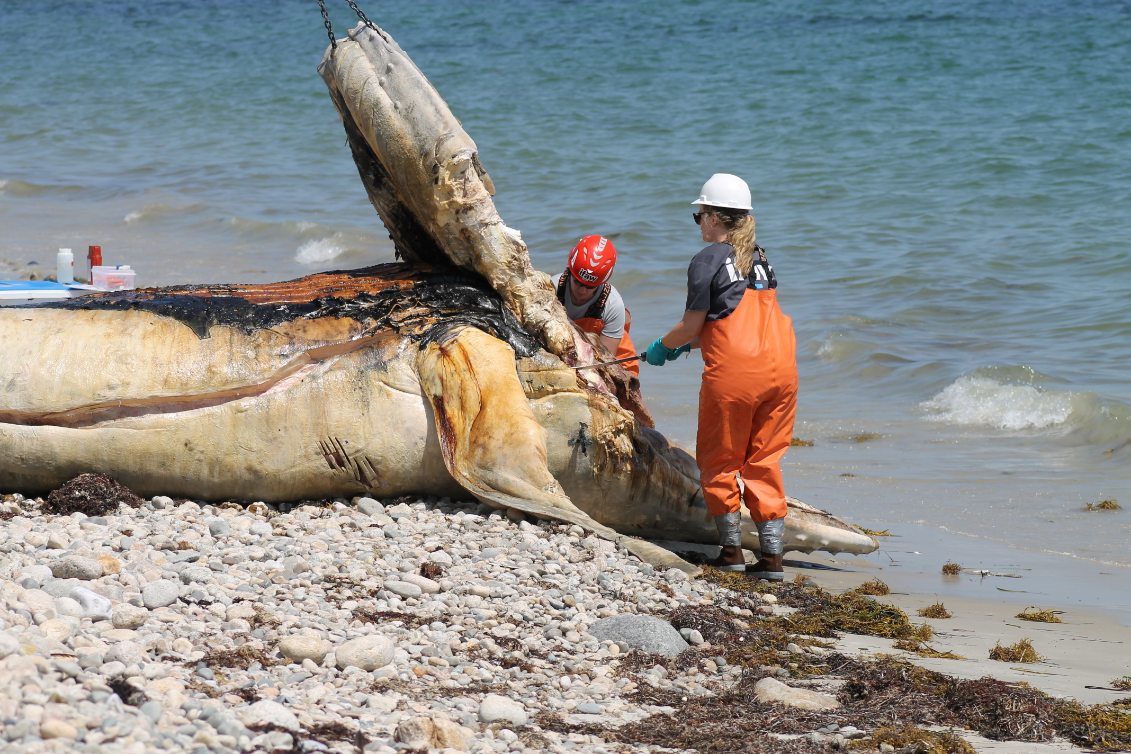What the Ocean Brings Us
By Emma Fralin, Cornell DVM ‘25
For my last summer before clinical rotations, I wanted to gain experience with marine animals. I was accepted as an intern with the International Fund for Animal Welfare (IFAW) Marine Mammal Rescue & Research (MMRR) program in Cape Cod, Massachusetts, a unique geographical area where tides and coastlines can suddenly trap a dolphin or whale in inches of water. The coastal area is also close to the open seas, making both pelagic (open water) and coastal species susceptible to stranding events along the Cape’s many public and private beaches.
Training as a stranding veterinary intern
Stranding refers to pinnipeds (seals and sea lions) that are injured, or cetaceans (whales, dolphins, and porpoises) found alive on land without the ability to return to water. The MMRR team responds to stranded and at-risk animals to assess health, determine the best welfare decision for the animal (relocate and release or humane euthanasia), manage human interaction, and gather data for scientific research.
I was trained as one of MMRR’s summer stranding interns and learned how to: restrain seals, safely carry a dolphin in a stretcher, draw blood on seals and cetaceans, conduct marine mammal necropsies (animal autopsies), improve my photography skills, and take care of the protocols/inventories/checklists/cleaning that go into preparing a response-ready team. As the veterinary intern, I was able to maximize my experience by learning from MMRR’s multi-talented veterinarian, Dr. Sarah Sharp. She guided me through my first cetacean blood draw and ultrasound, showed me firsthand how tricky remote sedation is at sea, sent me to nearby organizations to observe seal surgery, and significantly helped me with my research project on short-beaked common dolphin (Delphinus delphis) blood parameters.
The challenges of disentangling a humpback whale calf
In addition to the clinical skills and research experience I was able to gain this summer, I was also able to participate in field work, outside of the office/lab/hospital setting. My most memorable day was spent on the water searching for humpback mom Lollipop (named after a tiny mark on her fluke in the shape of a lollipop) and her calf, whose pectoral flipper has been entangled tightly in a thin clear fishing line. Such a tight entanglement on a growing animal is a serious threat to its life due to the chances of infection, flipper loss, and/or sepsis.
The Center for Coastal Studies (CCS) had been attempting to disentangle the calf without success. The MMRR team was asked to help (everyone really does know everyone in the aquatics world!), with the goal of being able to provide light sedation to the calf so that it could remain at the surface long enough for CCS to disentangle it. The sedation was provided by Dr. Sharp using a dart gun system, and required numerous factors to line up perfectly—the calf needed to be about 15-20 meters from the boat, the dart gun’s calibration had to match that distance, the calf needed to surface high enough above the water’s surface, the mom could not be in between the calf and the boat, and this whole process had to happen in the two seconds the calf surfaced. Not surprisingly, this would be the first sedation of a humpback whale calf at sea. Despite all of this, Dr. Sharp successfully darted the calf, but (despite being hit with two darts), the calf did not show signs of sedation. The team will keep trying with different strategies until the calf is free of the line, hopefully, before mom and calf swim south for the winter.
We were on the water for about eight hours, although it felt like two. Naturalist and professional photographer Andrea Spence and I stayed on the roof of the boat’s small cabin to help spot the animals, who would surface and dive for a few minutes before popping up 100 feet in a different direction. At the end of our day, just before the weather was due to shift and we headed home, Lollipop and her calf began a series of magnificent breaches and splashes, respectively.
Human-wildlife interactions
Unfortunately, many of the cases I saw this summer involved some level of human interaction, whether it was entanglement, vessel or propeller strike, people in public approaching marine mammals too closely, or people pushing animals back out to sea. Not only is it unlawful to touch a marine mammal, dead or alive, under the Marine Mammal Protection Act, but doing so causes excess stress and suffering for the animal involved and prevents trained responders from being able to help.
Oftentimes, animals that strand are sick, but even if entirely healthy, a cetacean that endures a stranding event undergoes physiologic stress resulting in skeletal muscle and cardiac damage. Heart failure can lead to sudden death. Kidney damage related to muscle breakdown can also lead to death days to weeks later. This is very similar to the process in terrestrial animals called “capture myopathy.”
Advocating for marine life and their habitat
My time at IFAW MMRR helped solidify my intentions to build my career with aquatic animals, combining research and conservation work, including aquatic species response and rehabilitation. I want my career to focus on improving the quality and quantity of care we can provide marine animals. I was exposed to a wide variety of very real threats facing marine species, some that were new to me and some that I already knew well. Being face-to-face with these issues and these animals left deep impressions on me. I also want to advocate for marine life and ecosystems at a legislative level, working with policymakers to solve anthropogenic problems, with a focus on protecting critically endangered populations. I anticipate that my veterinary career will continuously evolve, not necessarily in terms of my current goals, but in response to what the tides bring.
Organizations that helped make my experience possible include the Cornell Yang Center for Wildlife Health through the Student Support Fund, and the International Fund for Animal Welfare’s Marine Mammal Rescue & Response program. All stranding activities are conducted under a federal stranding agreement between IFAW and the National Marine Fisheries Service (NMFS) under the Marine Mammal Protection Act (MMPA).
Emma Fralin, class of 2025, is a third year DVM student at the Cornell University College of Veterinary Medicine. Her goals with wildlife medicine and Planetary Health are focused on the world’s oceans and how humans can be better caretakers of such immense habitats. She aspires to work with marine wildlife and undertake research, bringing critical information to policymakers and potentially becoming more directly involved in policy herself.





